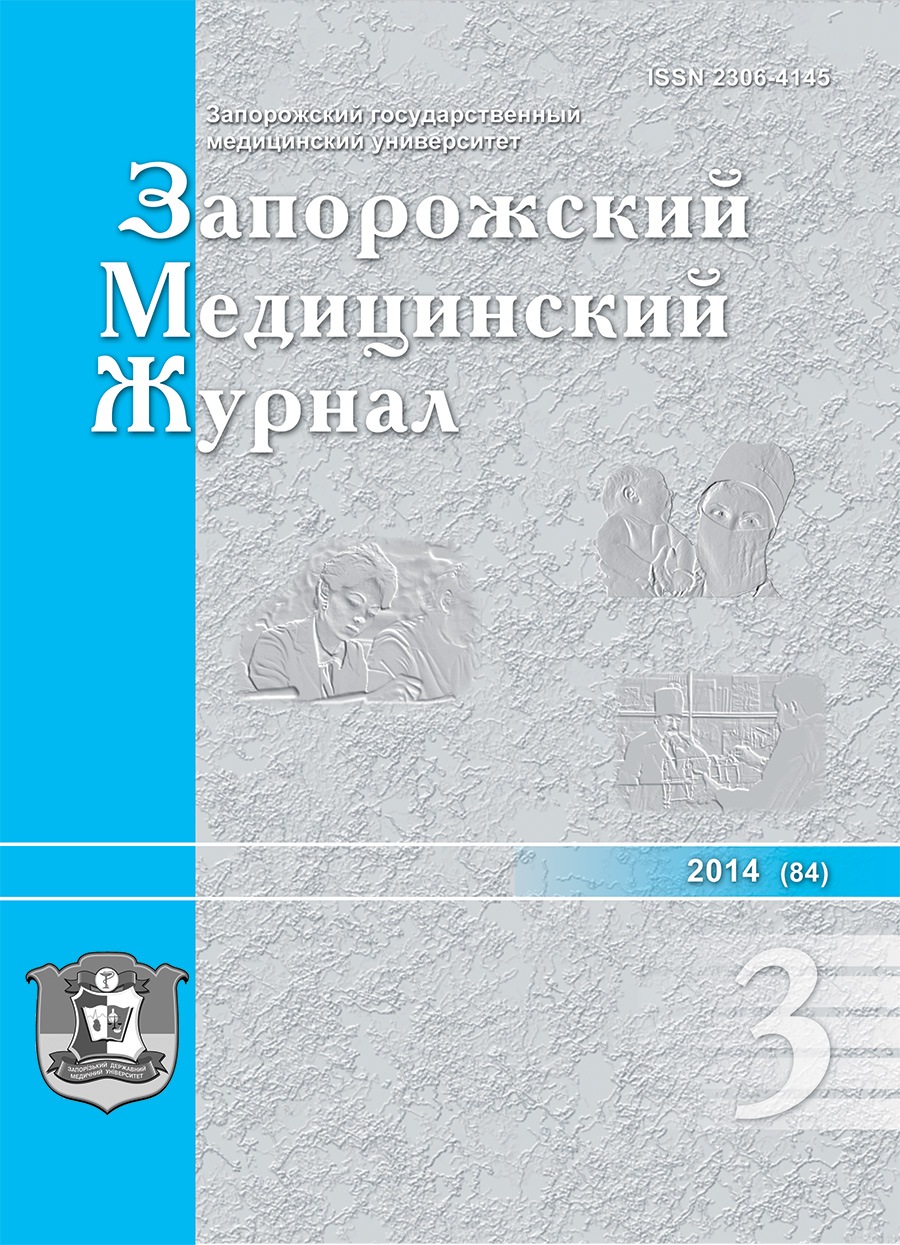Prognostic significance of GDF 15 and NTproBNP levels and echocardiographic parameters in patients with heart failure with preserved ejection fraction and asymptomatic diastolic dysfunction after myocardial infarction on the background of arterial hyperte
DOI:
https://doi.org/10.14739/2310-1210.2014.3.25596Keywords:
heart failure, growth differentiation factor 15, myocardial infarction, hypertensionAbstract
Aim. Chronic heart failure with preserved ejection fraction is related to syndromes with a poor prognosis. 93 patients with preserved left ventricular ejection fraction (EF>45%) after myocardial infarction on the background of arterial hypertension were examined. Prognostic significance of GDF 15 and NTproBNP levels (ELISA) and echocardiographic parameters were evaluated.
Methods and results. Patients were divided into 2 groups. The 1st included 62 patients with heart failure with preserved ejection fraction. The 2nd – 31 patients with asymptomatic diastolic dysfunction. The greatest prognostic potential in patients with heart failure with preserved ejection had GDF-15, NTproBNP levels and E/E' ratio. Only GDF-15 had prognostic significance in patients with asymptomatic diastolic dysfunction. Evaluation of GDF-15 and NTproBNP biomarkers levels in combination increased positive predictive value of each of them in both groups of study. Add of the E/E' ratio or atrial volume index evaluation to the GDF- 15 and NTproBNP biomarkers levels combination assessment lead to the further increase of the positive predictive value of biomarkers.
References
Voronkov, L. H., Amosova, K. M., Bagrii, A. E., et al. (2012) Rekomendatsii z diagnostyky ta likuvannia khronichnoi sertsevoi nedostatnosti [Guidelines for the diagnosis and treatment of chronic heart failure]. Kyiv. [in Ukrainian].
Kopica, N. P., Vishnevskaya, I. R., Leshhenko, A. V. (2012) Novyj biomarker – transformiruyushhij faktor rosta GDF-15 v ocenke prognoza i e`ffektivnosti lecheniya bol'nykh ostrym koronarnym sindromom [New biomarker – transforming growth factor GDF-15 in the assessment of prognosis and treatment efficacy in patients with acute coronary syndrome]. Kardiologiya: ot nauki k praktike, 2, 12–19. [in Ukrainian].
Svyshchenko, Ye. P., Matova, E. A. (2009) Diastolicheskaya serdechnaya nedostatochnost' [Diastolic heart failure]. Serdechnaya nedostatochnost', 1, 47–54. [in Russian].
Cleland, J. G., Taylor, J., Freemantle, N., Goode, K. M., Rigby, A. S., & Tendera, M. (2012). Relationship between plasma concentrations of N-terminal pro brain natriuretic peptide and the characteristics and outcome of patients with a clinical diagnosis of diastolic heart failure: a report from the PEP-CHF study. European Journal of Heart Failure, 14(5), 487–494. doi: 10.1093/eurjhf/hfs049.
Conlon, C., O’Loughlin, C., Patle, A., et al. (2007) Elevated B-type natriuretic peptide is associated with the presence of diastolic abnormalities in an asymptomatic, at-risk community population: The Screening TO Prevent Heart Failure (STOP HF) Study. Eur. J. Heart Fail., 6, 75. doi: 10.1016/S1567-4215(07)60207-0.
De Denu, S., Lavoie, J., Ducharme, A., O’Meara, E., Racine, N., Sirois, M. G., et al. (2012) Differences in biomarkers in patients with heart failure with a reduced vs a preserved left ventricular ejection fraction. Can J. Cardiol, 28(1), 62–68. doi: 10.1016/j.cjca.2011.09.007.
Ezekowitz, J. A., Lee, D. S., Tu, J. V., et al. (2008) Comparison of one-year outcome (death and rehospitalization) in hospitalized heart failure patients with left ventricular ejection fraction >50% versus those with ejection fraction <50%. Am. J. Cardiol., 102(1), 79–83. doi: 10.1016/j.amjcard.2008.02.102.
Jorge, A. J. L., Ribeiro, M. L., et al. (2012) Left Atrium Measurement in Patients Suspected of Having Heart Failure With Preserved Ejection Fraction. Arq. Bras. Cardiol, 98(2), 175–181. doi:10.1590/S0066-782X2012005000009.
Miyagishima, K., Hiramitsu, S., Kimura, H., et al. (2009) Long term prognosis of chronic heart failure: reduced vs preserved left ventricular ejection fraction. Circ. J, 73, 92–99.
Nagueh, S. F., Appleton, C. P., Gillebert, T. C., et al. (2009) Recommendations for the Evaluation of Left Ventricular Diastolic Function by Echocardiography. Journal of the American Society of Echocardiography, 22, 107–133. doi: 10.1016/j.echo.2008.11.023.
Okura, H., Kubo, T., Asawa, K., Toda, I., Yoshiyama, M., Yoshikawa, J., et al. (2009). Elevated E/E' Predicts Prognosis in Congestive Heart Failure Patients With Preserved Systolic Function. Circulation Journal, 73(1), 86–91.
Stahrenberg, R., Edelmann, F., Mende, M. (2010) The novel biomarker growth differentiation factor 15 in heart failure with normal ejection fraction. Eur. J. Heart Fail., 12, 1309–1316. doi: 10.1093/eurjhf/hfq151.
Downloads
How to Cite
Issue
Section
License
Authors who publish with this journal agree to the following terms:
Authors retain copyright and grant the journal right of first publication with the work simultaneously licensed under a Creative Commons Attribution License that allows others to share the work with an acknowledgement of the work's authorship and initial publication in this journal. 
Authors are able to enter into separate, additional contractual arrangements for the non-exclusive distribution of the journal's published version of the work (e.g., post it to an institutional repository or publish it in a book), with an acknowledgement of its initial publication in this journal.
Authors are permitted and encouraged to post their work online (e.g., in institutional repositories or on their website) prior to and during the submission process, as it can lead to productive exchanges, as well as earlier and greater citation of published work (See The Effect of Open Access)

